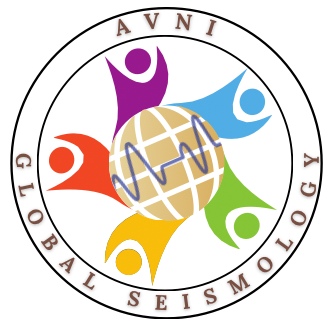Global Seismology for Schools
Global Seismology for Schools#
Designed by Raj Moulik // Maintained by Global Seismology
Courtesy AVNI software ecosystem // Powered by Jupyter
This website hosts the interactive book, Global Seismology for Schools, which offers an introduction to a smorgasbord of introductory topics relevant to science classrooms. The content is specifically designed for teachers interested in geoscience education using some of the latest computational tools. This website is part of the software ecosystem called Analysis and Visualization toolkit for plaNetary Inferences (or AVNI), which provides free web-based and backend code access to tools, techniques, models and data related to global solid Earth geosciences.
Introduction
Earth’s solid interior harbors the long-term memory of processes that shape our planet. Seismology is the primary tool for probing this otherwise inaccessible frontier of exploration. The method of seismic tomography uses waves generated by earthquakes to image the Earth’s interior in a manner similar to CT scanning of the human body. Seismic tomography is useful for assessing natural hazards, locating explosions and characterizing plate tectonics. Routine calculations for earthquake magnitudes and early warning systems also need these models. This seminar will discuss how the iterative nature of this scientific method involves using observed data to develop quantitative models of physical properties (e.g. density). We will further consider implications for the current state of the Earth’s interior (e.g. temperature, composition) and its dynamic evolution into the future. Seminar activities will explore how tomographic models are used to determine interior structure and how these features manifest as observed waves. We will end by brainstorming ways to effectively integrate solid Earth topics in the classroom.
Schedule
Welcome and Introductions (15 min)
History of Geophysics at Princeton (15 min)
Geophysics and Journey to the Center of the Earth (1 hr)
Coffee Break (30 min, 10:30 - 11:00 AM)
Why Seismology Rocks? (45 min)
Live demo of the Princeton seismometer! (15 min)
Lunch Break (1 hr, noon - 1 PM)
Interactive Group Activity on Seismic Data and Models (1 hr)
Group Discussion and Conclusion (1 hr)
Required Reading
Please download and read the following selected text from Earth: Portrait of a Planet 7th Edition by Stephen Marshak before the seminar:
Chapter 2: Journey to the Center of the Earth Download PDF
Interlude D: Earth’s Interior Revisited Download PDF
General Interest
Two books of general interest can help contextualize geosciences and seismology. No prior readings from these books are needed.
Timefulness by Marcia Bjornerud
Geopedia by Marcia Bjornerud
Acknowledgements
A project like this one is a culmination of feedback and input from several excellent colleagues and organizations. Some of them are listed in the Acknowledgements.
Feedback
This is an evolving document so please send Raj Moulik or the AVNI Administrators any constructive feedback or suggestions.
Suggested Citation
Moulik, P., AVNI Course: Global Geophysics and Seismology for Schools, Version 1.0 (2023), https://portal.globalseismology.org/courses/teachers-as-scholars



